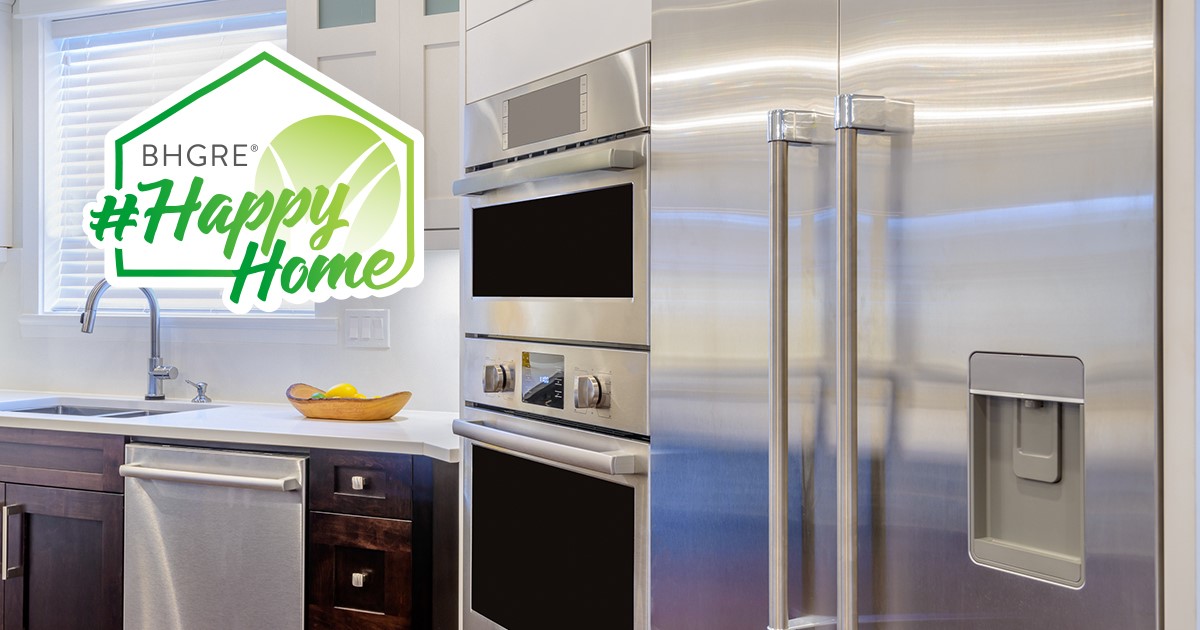Stainless-steel appliances have been popular for more than a decade now, and they continue to be trendy because they fit so well with the industrial-chic that’s in vogue. Eco-friendly products for cleaning stainless steel have recently become increasingly popular.
Stainless steel is steel that’s been coated with nickel or chrome, then polished or brushed. Most appliances and sinks are brushed, while polishing is reserved for stainless-steel pots, which get a lot of hard use and have to withstand a certain amount of abrasion. Using steel wool on a stainless-steel pot is one thing, but it should never be used on a brushed stainless surface.
Cleaning Stainless-Steel Appliances
As anyone who has invested in a stainless-steel fridge knows, every fingerprint, grubby or otherwise, shows up on stainless steel. Since they need gentle cleaning often, you’ll want to look for eco-friendly products to clean your stainless-steel appliances and save your hands and your reputation for being house proud.
Olive Oil and Stainless Steel
The easiest and cheapest cleaner around is so eco-friendly it gets environmentalist David Suzuki’s seal of approval. Drip a tablespoon of olive oil onto a rag and rub the appliance’s surface to remove smudges. Then, sprinkle a tablespoon of white vinegar onto the other side of the rag and wipe off the oil.
Let the vinegar dry naturally and you’re done. You could even invest in a little kitchen cleaner oil and vinegar set (or demote the one you have and invest in one that’s slightly more upscale for dining) and leave it out on your counter so it’s within easy reach as you finish your kitchen clean-up at the end of every day.
Eco-Friendly Products for Purchase
There are a variety of eco-friendly stainless-steel cleaning products on the market now, ranging from sprays that clean and polish to stainless-steel cloths that have micro silver woven into the cloth. The cloths are specially woven to collect and trap contaminants and then self purify within 24 hours.
However, microfiber cloths do eventually need to be washed, and they release fibers similar to the microbeads from cosmetic scrubs that are now being banned because they pollute the water system.
There are also gentle, biodegradable home cleaning scrubs made from baking soda and vegetable soap you might want to try on stainless-steel stovetops, where things tend to get particularly messy and baked on due to the heat generated by the stove and oven.
You can use these scrubs on other areas too, including sinks and countertops, which will cut down on the number of cleansers you have to keep on hand. To use, wet the surface you want to clean, sprinkle the scrub over it, rub with a damp cloth, rinse, and wipe dry.
Other multi-surface cleaners suitable for use on stainless-steel appliances are made from water, decyl and alkyl glucoside, and alcohol denat. Spray and wipe clean. Despite the ominous-sounding chemical names, these cleaners don’t produce fumes, and are PH neutral and phosphate-free.
Plant-Based Cleaners for Stainless Steel
Then there are one-step liquid cleaners made from plant-powered cleaners Laureth 9 and Laureth 3 (both of which are used in cosmetic products, including shampoos and conditioners), water, and methyl soyate. Spray on a damp cloth and rub over the appliance until it’s both clean and shiny again.
There’s also an eco-friendly paste cleaner that works on stainless steel, porcelain, and chrome. It will also remove scuffs, hard watermarks, and magic marker from surfaces.
Baking Soda as a Cleaner
Before you try commercial cleaning products, invest in a big box of baking soda and see how it works on its own. For horizontal surfaces, use small amounts of baking soda and gently scrub the area with a damp cloth, then remove the baking soda residue with another wet cloth. For vertical surfaces like fridges and dishwashers, wet the cloth and sprinkle the baking soda directly on the cloth, then rinse off.
For more stubborn stovetop stains, make a paste of baking soda and water, apply to baked-on goo, let sit for 10 minutes or so and scrub clean. You can always add a drop or two of an essential oil to get a just cleaned smell.
Other Home Remedies for Cleaning
Either club soda and white vinegar on a wet cloth will work to clean your stainless steel. Wipe down your appliances and then dry them with another clean cloth. You can also put club soda into a spray bottle. You may find club soda leaves streaks, but you can get rid of those with a little oil to really buff up the surface shine.
Use lint-free cotton cloths and never use anything but a soft cloth on stainless steel. Scrubbers will leave scratches. To make your stainless-steel appliances look show-room shiny again, identify the direction of the grain and wipe in the same direction rather than against the grain.
Try different products to see what works for you. One huge advantage of using eco-friendly products in the kitchen is that you don’t have to worry about using toxic chemicals in your food preparation and storage area. And the DIY ones will save you a lot of money over time — at least enough for a couple of dinners out over the course of a year.


